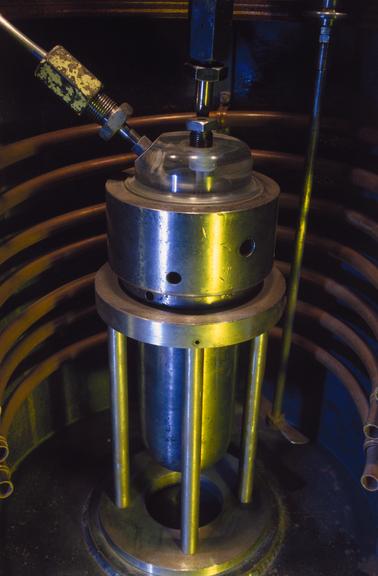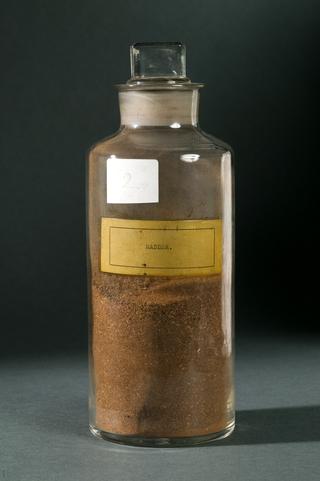Assembly of equipment, partly original representing laboratory set-up with which polyethylene (polythene) was discovered, comprising 1 original pressure balance hand pump pressure vessel ii supplementary : thermostat (see part records)
Polyethylene (also known as 'Polythene') is the world's most abundant plastic. It was discovered in 1933 at Imperial Chemical Industries's plant in Winnington, UK. The experimentation that led to the discovery involved experiments where materials were submitted to high pressures (up to 2000 atmospheres), with the hope of producing new and potentially useful results. On Friday, 24 March 1933, a team led by Reginald Gibson set up an experiment in which a mixture of ethylene and benzaldehyde was heated to 170C, the pressure was raised to 1700 atmospheres and the apparatus left in the hope that the two substances would combine together. No evidence of the desired reaction was found, but Gibson wrote in his notebook, 'waxy solid found in the reaction tube'. This was found to be a polymer of ethylene, a new plastic that would change the world.









